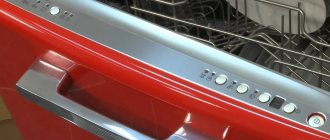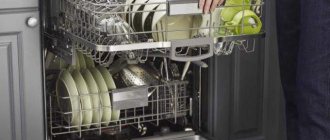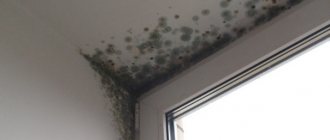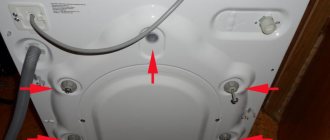Any washing household appliance constantly interacts with water, and dishwashers are no exception. Even if the appliance is turned off, there is still liquid left inside the system, so experts advise opening the door after each dishwashing to allow it to evaporate. It will also be useful to understand how to drain the water from the dishwasher.
What is it for
Removing liquid from your dishwasher may be necessary under different circumstances. First of all, this is the presence of malfunctions in the operation of the system, which oblige the owner to drain the water completely, and with caution. This will allow you to turn the device over to either side when performing repair work. Otherwise, liquid may end up on the operating board or control unit, causing additional failures. A short on the board increases the likelihood of current leakage into the case. And this already threatens the life and health of the user.
Less often, people drain the water to “mothball” their car for the winter. This is necessary when using dishwashers only in the summer in an unheated building, for example, a summer house. Before leaving the room for the winter, you need to prepare the dishwasher and clean it of any remaining liquid. Otherwise, it may freeze, which will lead to the rupture of plastic tubes and other important components. When the spring season arrives, the need for repeated repairs will arise.
What to do if it doesn’t drain
If the machine refuses to drain water even after cleaning the above components, the breakdown is more serious. The following items of equipment may fail:
- water pump;
- Control block;
- water flow sensor.
These malfunctions require professional intervention. Therefore, if simple steps to get rid of the blockage are not successful, you should contact a service center.
How to drain from a working machine
Draining the dishwasher is easy. To do this, you need to understand the operating principle and design of the equipment, and also study the step-by-step instructions for performing the procedure. If the liquid is drained for the winter, it is important to follow these instructions:
- First of all, on the control panel you need to select the liquid drain program.
- Next, you need to wait until the dishwasher is completely cleared of residual water and disconnect it from the power source.
- After turning off the water supply, you need to remove the hoses and spread rags along the right wall.
- You also need to unscrew the garbage filter and the lid of the salt tank.
- Finally, all that remains is to tilt the device on its right side to drain the remaining amount of liquid. After this, you can move the dishwasher to a warm room with good ventilation and open the door slightly to dry it.
That's it, the car is ready for storage until next season. Now she is not afraid of frost or other negative factors.
How to drain water if clogged
If the dishwasher stops draining, first check to see if the hose is pinched. Then you need to make sure that the filter located in the bottom of the machine is not clogged.
This occurs due to poor cleaning of dishes from large food residues before loading into the hopper. It is not difficult to remove a blockage from the filter: remove it and rinse it under running water with a brush.
If the drain hose is clogged, you need to unscrew it from the sewer and check how water flows out of the machine when you turn on the drain. Good pressure indicates that the pipes will have to be cleaned.
If the pressure is poor, you can conclude that there is a blockage in the hose itself. Accumulated debris must be removed using a wire by disconnecting the hose from the dishwasher.
A clogged drain pump can also prevent water from flowing out. A technician can thoroughly clean this part without disrupting the operation of the device.
Expert opinion
I work in the household appliance repair industry. Extensive experience in restoring washing machines and dishwashers.
Ask a Question
After removing the blockages, the water can be drained by placing the machine on its right side and unscrewing the filter. Experts recommend using a washing vacuum cleaner or pump to speed up the process.
How to drain a broken machine
If you cannot drain the water from the dishwasher due to some malfunction, the previous method will not be effective. In this case, it is better to follow the following instructions:
- First, the machine must be de-energized and disconnected from the sewer system.
- Next, open the door, remove the lower basket and garbage filter.
- After unscrewing the plug with the ion exchanger tank, you need to take a basin, a tube, droppers and a syringe. One end of the tube is connected to a syringe, and the other is placed in a reservoir with salt.
- Using a syringe, you need to suck in water, and then remove it from the end and lower it into a basin. After such manipulations, the remaining liquid should independently flow from the salt reservoir into the basin.
- At the last stage, drain the water from the dust filter niche and the tank lid.
This method guarantees complete cleaning of the interior of the dishwasher from liquid.
The principle of water movement in a dishwasher
If other problems can be dealt with after the fact, without understanding the reasons, then the lack of drainage requires a detailed analysis. And the first thing you should understand is the operating principle of the PMM.
The dishwasher does everything almost like a washing machine, only in the process it moves water twice through its cleaning system.
Each washing stage ends with draining the water. If the dirty liquid is not discharged, the machine is not able to proceed to the next step of the program
First, coarse filtration occurs, then fine filtration. Average water consumption is 9-12 liters. Savings are achieved through constant purification of the same water. After the filter, the liquid enters the pump and returns to the rocker arm and sprinklers.
At the end of the program selected by the user, the water goes down, and the drainage pump sends it to the sewer system. This does not happen if some element of the drain system does not work correctly or is completely out of order.
What to do if your Bosch dishwasher does not drain?
If your dishwasher stopped before the end of the cycle or did not run it properly, then, depending on the coding on the screen, you can determine the cause of the malfunction. If the words “END”, E24, E25 are displayed on the screen or a faucet is displayed, this means that your Bosch dishwasher is not draining water.
Dishwasher drain system problems
If a Bosch dishwasher does not drain water, this is just a sign of a malfunction, including:
- the drainage system is clogged;
- the siphon or other drainage element is clogged;
- the drain pump has failed;
- control failure occurred.
All these breakdowns are complex, but can be corrected.
My Bosch dishwasher won't drain, what can I do?
You need to start your inspection from the drainage system, that is, from the point where the drain hose is connected. If a clog is found there, then the problem is not in the dishwasher. It is necessary to clean this particular part of the drain system. If not, then you should inspect the equipment itself.
First you need to inspect the filter. It unscrews clockwise. It is removed along with the mesh. It needs to be washed and cleaned with a brush. For this you need to use water, preferably running water. Next, you need to remove the remaining water from the dishwasher manually.
Then the drain pump impeller is checked. To do this, you need to open the lid. It can be screwed on or snapped. It depends on the model. After opening the lid, you need to get rid of all foreign things that could get inside. Check that nothing is blocking the rotation of the impeller.
We put all the parts in place and check the result. If it is missing, this may be due to a faulty drain pump. To fix it, you need to disassemble the machine; to perform such repairs, it is better to contact a specialist.
Enabling forced drain
This operation can only be carried out after checking and cleaning the drain system. To force the machine to forcefully drain water, it is necessary to carry out a number of manipulations, which depend on the model of the machine.
Older Bosch series may have a ratchet switch installed. To open the drain valve, simply rotate it clockwise. In models srv, sgv, etc. you need to reset the programs and close the door. The valve will automatically open. In order to start forced draining for smv, spv, etc. machines, you just need to hold the start button for about 3 seconds.
toorem.ru
How to drain water from a Bosch dishwasher
When the dishwasher is running, it is constantly in contact with water. Even when turned off, there is some water in the machine system, so experts recommend opening the door slightly after washing so that at least some of the water evaporates and does not stagnate inside. There are times when it is necessary to remove water completely and users wonder how to completely drain the water from a Bosch dishwasher. Let's discuss this.
What is it for?
Most often, it is necessary to forcefully drain the water from the dishwasher when some technical problems have arisen with it and the machine needs to be repaired. In this case, they try to drain the water completely and as carefully as possible. After all, during the repair process, the case will need to be turned over, and if the water is not drained, it may get on the power board or control module, which will provoke another breakdown.
A short circuit on the power board can cause a current leak to the housing, which in turn poses a direct threat to the life and health of users.
In slightly more rare cases, people drain the water from the machine in order to preserve it for the winter. If the Bosch dishwasher is used only in the summer in an unheated room, then leaving it with water during the winter is dangerous. The frozen water inside will rupture the plastic pipes and the machine will have to be seriously repaired in the spring. In general, we have decided on the reasons for draining the water, now let's see how it is done.
Removing liquid from the working machine
We decided that it is only necessary to drain water from a working dishwasher if we decide to preserve the unit until spring. This is what we will proceed from. In order to remove all the water, you need to do the following.
- Select the water drainage program on the control panel.
- We wait until the machine completes it.
- We turn off the power to the dishwasher.
- We turn off the water supply and remove the hoses.
- Place rags on the floor near the right wall of the dishwasher.
- Unscrew the garbage filter and the lid of the salt tank.
- Carefully tilt the machine onto its right side. Some water may still drain out.
- We drag the dishwasher to a warm, well-ventilated place and open the door to let the machine dry inside.
After the above manipulations, the machine can be put away in a dry place. Let her stand quietly until the next season, nothing bad will happen to her now.
Removing liquid from a broken machine
If the dishwasher does not drain the water on its own, then the above method cannot be used. No, well, hypothetically, you can also tilt it on its side, but then not a single liter of water will pour out of the machine, which will certainly flood the power board. However, this measure does not guarantee that all the water will come out of the system, so we offer another solution. What to do?
- We turn off the power and disconnect the machine from water and sewerage.
- Open the door wide.
- We remove the lower basket and take out the garbage filter along with the mesh.
- We unscrew the plug with the ion exchanger tank, where salt is usually poured.
- We take a basin, an IV tube and a syringe. We connect one end of the tube to a syringe, and lower the other into the salt reservoir.
The trick may not work the first time. Try again, after two or three attempts it will definitely work.
- We suck up the water with the syringe, remove the syringe from the end of the tube and lower this end into the basin. Water should flow by gravity from the salt reservoir into the basin.
- As soon as we manage to drain the water from the ion exchanger tank, we throw the end of the tube into the niche of the garbage filter and perform the same operation.
In this simple way, it is possible to remove almost a drop of water from the machine. Subsequent drying will complete the job and the very next day, you can safely carry out independent repairs or take the dishwasher to a service center.
Why doesn't the machine remove liquid?
Why does water remain in the Bosch dishwasher? Why does the machine stop draining water at one “wonderful” moment? This is usually due to either blockages or malfunctions of the elements responsible for draining water, most often the former. The fact is that many users neglect the basic rules of caring for their “home assistant”. This leads to food debris clogging the garbage filter and water stops circulating, remaining in the washing chamber. Of course, under these conditions, draining it turns out to be impossible.
This problem can be solved very simply. You need to roll up your sleeves, open the washing chamber door, unscrew and rinse the filter and the nearby mesh. After such “spring cleaning” the machine should work normally. It’s worse if the dishwasher does not remove water due to breakdown:
- pumps;
- circulation pump;
- water flow sensor;
- control module.
In this case, you need to immediately contact a specialist. A professional will quickly diagnose, clarify what is broken and repair your “home assistant”, leaving you with valuable recommendations along the way. You should not engage in self-repair, especially in cases where you have absolutely no experience in such matters.
So, removing water from the dishwasher turns out to be quite easy, the main thing is to know a few tricks, and the rest is a matter of technique. We hope our tips are really useful to you. Good luck!
mashmaster.ru











